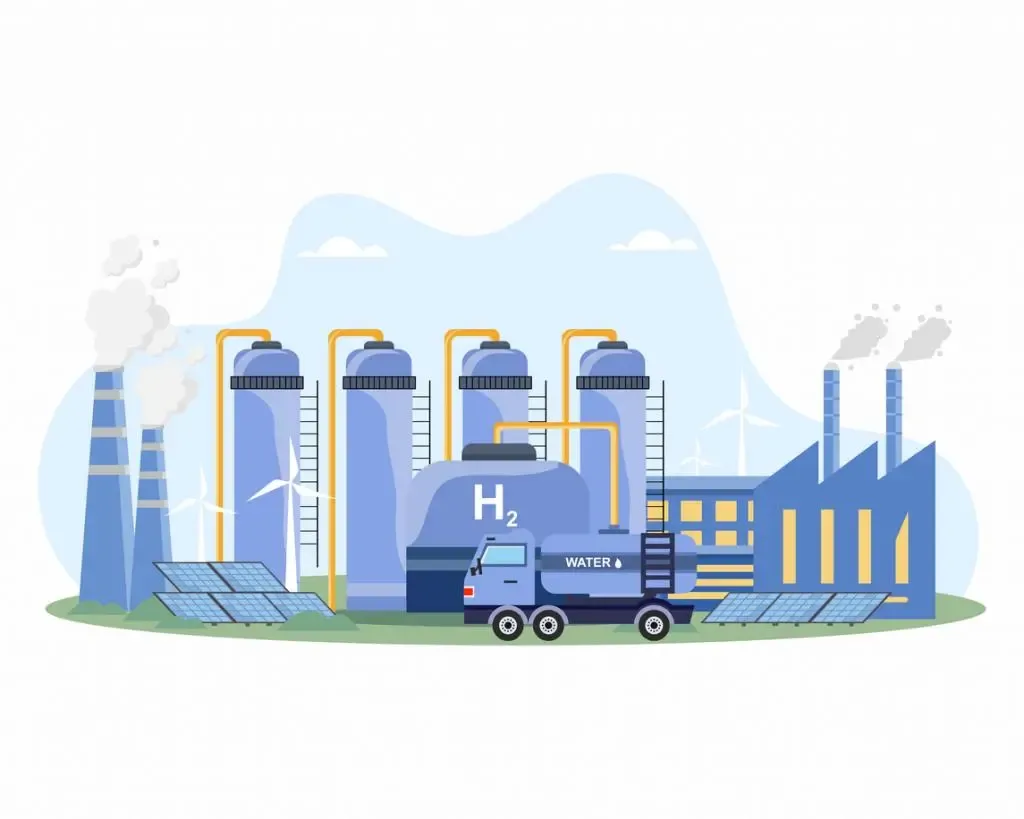About Electrolysers
- It is an apparatus that produces hydrogen through a chemical process (electrolysis) capable of splitting water molecules into hydrogen and oxygen molecules by using electricity.
Working
- An electrolyser consists of a conductive electrode stack separated by a membrane to which a high voltage and current is applied.
- This causes an electric current in the water which causes it to break down into its components: hydrogen and oxygen.
- The oxygen generated in parallel is released into the atmosphere or can be stored for later use as a medical or industrial gas in some cases.
- The hydrogen is stored as a compressed gas or liquefied for use in industry or in hydrogen fuel cells, which can power transport vehicles such as trains, ships and even aircraft.
Types of Electrolysers
- Alkaline electrolysers: Alkaline electrolysis is a mature and commercially available technology used primarily by the fertiliser and chlorine industries.
- It presently accounts for almost two-thirds of the global electrolyser capacity.
- It uses thick membranes and nickel-based electrodes.
- Proton exchange membrane (PEM) electrolysers: It operates at high pressure, due to the use of thin perfluorosulfonic acid (PFSA) membranes.
- However, the PFSA acidic environment makes it necessary to use gold and titanium plated electrodes and metals such as platinum, iridium, and ruthenium as catalysts.
- They are the most popular because they produce high-purity hydrogen and are easy to cool.
- Solid oxide electrolysis cell (SOEC) electrolysers : They utilise heat to make hydrogen from steam and are best placed where there is a heat source available (nuclear or industrial facilities).
- They operate at high temperatures (500 – 850degrees).
- Anion exchange membrane (AEM) electrolysers: They operate at significantly lower temperatures of 50 – 60 degrees.
- They combine the less harsh conditions of alkaline electrolysers with the simplicity and high efficiency of PEM electrolysers.
Q1: What is hydrogen?
It is a clean alternative to methane, also known as natural gas. It’s the most abundant chemical element, estimated to contribute 75% of the mass of the universe.
Source:Domestic manufacturing of electrolysers can be game changer for industrial emissions
Last updated on November, 2025
→ Check out the latest UPSC Syllabus 2026 here.
→ Join Vajiram & Ravi’s Interview Guidance Programme for expert help to crack your final UPSC stage.
→ UPSC Mains Result 2025 is now out.
→ UPSC Notification 2026 is scheduled to be released on January 14, 2026.
→ UPSC Calendar 2026 is released on 15th May, 2025.
→ The UPSC Vacancy 2025 were released 1129, out of which 979 were for UPSC CSE and remaining 150 are for UPSC IFoS.
→ UPSC Prelims 2026 will be conducted on 24th May, 2026 & UPSC Mains 2026 will be conducted on 21st August 2026.
→ The UPSC Selection Process is of 3 stages-Prelims, Mains and Interview.
→ UPSC Result 2024 is released with latest UPSC Marksheet 2024. Check Now!
→ UPSC Prelims Result 2025 is out now for the CSE held on 25 May 2025.
→ UPSC Toppers List 2024 is released now. Shakti Dubey is UPSC AIR 1 2024 Topper.
→ UPSC Prelims Question Paper 2025 and Unofficial Prelims Answer Key 2025 are available now.
→ UPSC Mains Question Paper 2025 is out for Essay, GS 1, 2, 3 & GS 4.
→ UPSC Mains Indian Language Question Paper 2025 is now out.
→ UPSC Mains Optional Question Paper 2025 is now out.
→ Also check Best IAS Coaching in Delhi

















